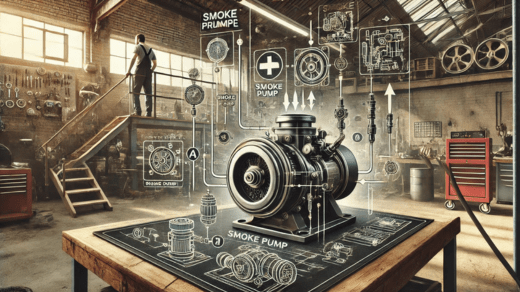Working principle and use of smoke pumps

I. Definition and working principle
Smoke pumps convert smoke oil, water or other smoke-making materials into tiny particles through specific mechanical or physical principles, and form continuous smoke output. Its working principle may involve processes such as heating, gasification, compression or atomization, depending on the type and design of the smoke pump.
II. Features and advantages
1. Efficient smoke generation: Smoke pumps can generate smoke quickly and continuously to meet the needs of various application scenarios.
2. Strong controllability: Many smoke pumps have functions such as adjusting the amount of smoke, smoke concentration and spray direction, which are convenient for users to adjust as needed.
3. Portability: Some smoke pumps are compact and lightweight in design, easy to carry and move.
III. Main uses
1. Entertainment and performances
– Stage effects: Create smoke effects in concerts, dramas and film productions to enhance the visual experience.
– Nightclubs and parties: Used to create atmosphere and enhance lighting effects.
2. Fire training
– Simulated fire scenes: Create smoke in fire training to simulate real fire environments and help firefighters practice emergency responses.
3. Military and security training
– Simulate battlefield environment: Used in military training to simulate battlefield smoke and improve soldiers’ coping ability.
– Safety drills: Simulate emergency situations in safety drills at companies or schools.
4. Agriculture
– Pest control and disinfection: Spray pesticides or disinfectants in greenhouses or farmland, and the smoke pump can evenly cover large areas.
5. Industrial applications
– Test ventilation systems: Used to test the ventilation systems of buildings or industrial facilities to ensure that smoke can be effectively discharged.
– Detect leaks: Inject smoke into pipes or containers to detect leaks.
6. Scientific research
– Laboratory experiments: Simulate smoke in fluid dynamics or aerodynamic experiments and observe airflow patterns.
7. Car maintenance
– Detect vehicle exhaust systems: Detect leaks in exhaust systems through smoke.
8. Photography and videography
– Create atmosphere: Create smoke effects in photography or videography to enhance the atmosphere of the picture.
9. Medical and Health
– Disinfection and Cleaning: Used for fog disinfection in hospitals or laboratories to kill pathogens in the air.
10. Home and Personal Use
– Mosquito Repellent and Air Freshener: Use fog pumps to repel mosquitoes or spray air fresheners at home.
Summary
Smog pumps are widely used in entertainment, training, agriculture, industry, scientific research and other fields. Specific uses include creating visual effects, simulating training environments, detection systems, disinfection, etc. OSIAS’s smog pump can meet your various needs and bring you a professional experience.
